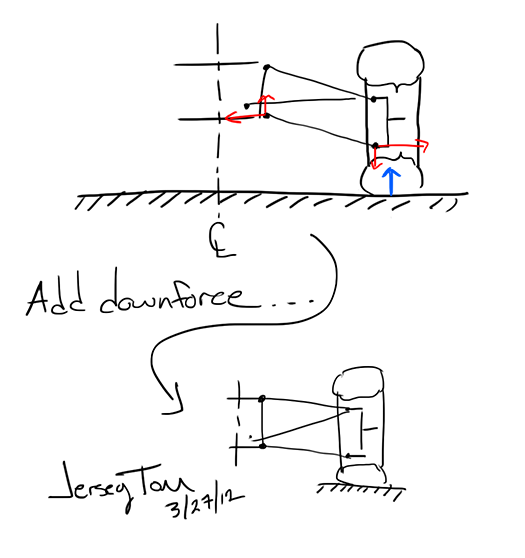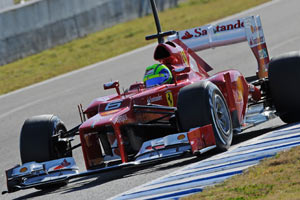munudeges wrote:Translated Autosprint wrote:Objectively the geometry of the suspension is a bit strange: chassis high with an horizontal rod... How can it work fine?
Yep, that's exactly what a lot of people have been wondering.
A sophomore year engineering student could answer this, and I thought we had covered it already in this thread. Draw it out:

Conventionally we think of the push/pull rod supporting the vertical load on the car because the control arms are usually more horizontal, and being tension/compression links in the front view are very inefficient at supporting vertical load. However, it is inconsequential what member(s) take up the tire loads - only that they are sufficiently angled or trussed relative to each other to do so.
In the static condition, the control arms being angled means that they can now support a vertical force. However, since the control arms only work in tension and compression, to support a vertical load you will get horizontal reactions at the chassis. The push or pull rod being horizontal, can now resolve that load and keep the car suspended.
Alternatively, if you really want to think of this in a convention manner just squat the car with downforce and you will see that really it's a pretty standard arrangement (as it has to be, this is simple statics) just in a slightly different view than most are used to seeing.
If "members on other teams" are really so baffled by this they need to take a look at some lecture notes from when they were 19. Or, it's entirely possible it's just ancillary personnel without an engineering background just throwing out their own speculation.
Not everyone is Ross Brawn...
Grip is a four letter word. All opinions are my own and not those of current or previous employers.




